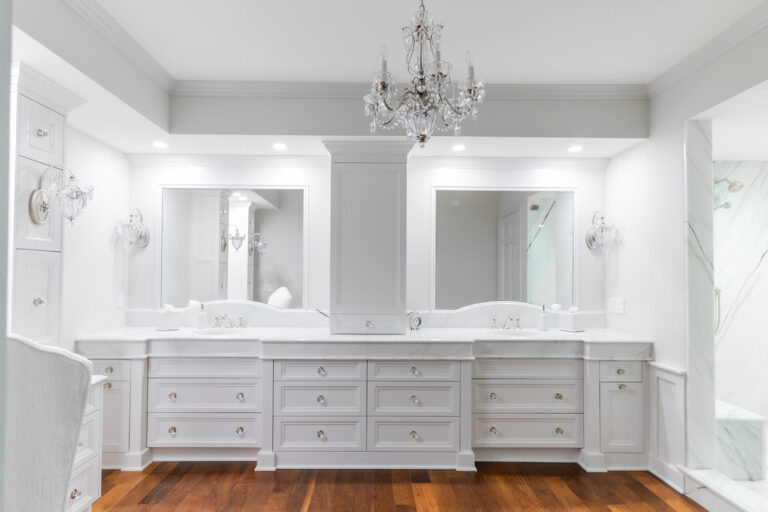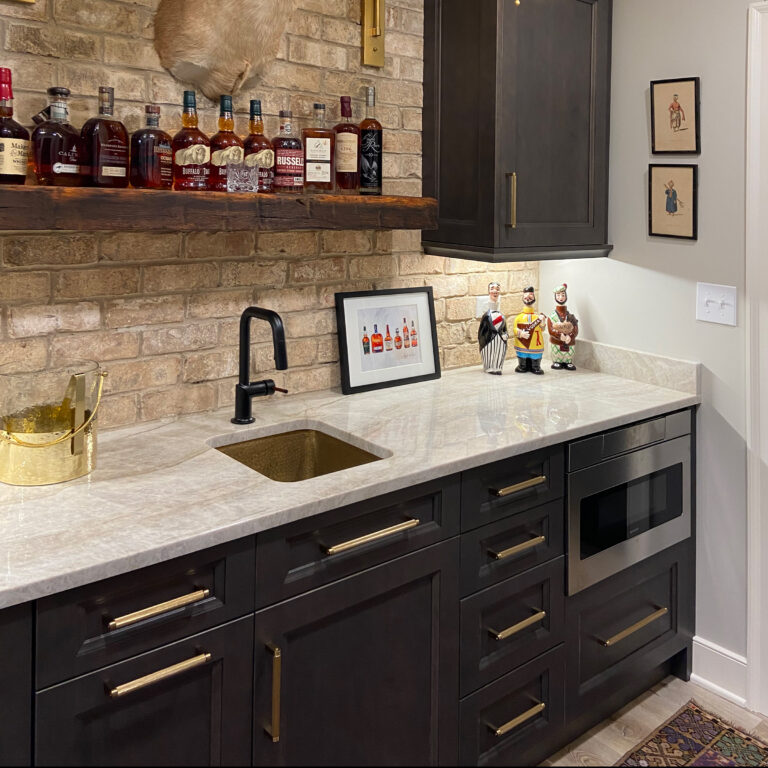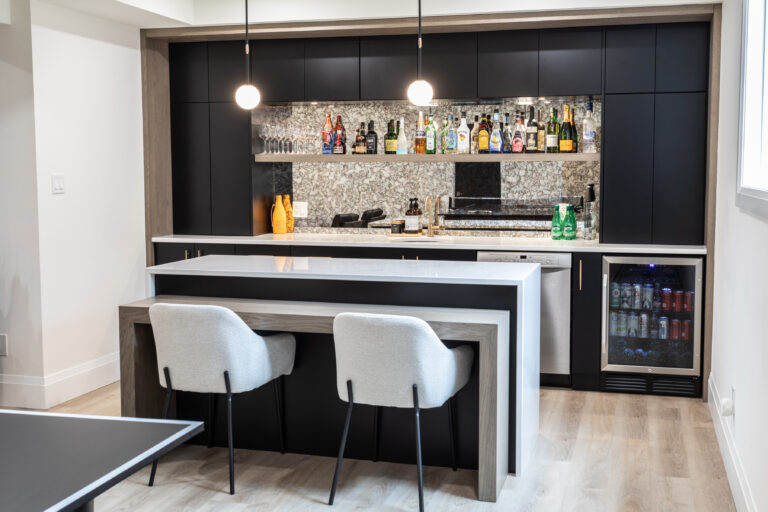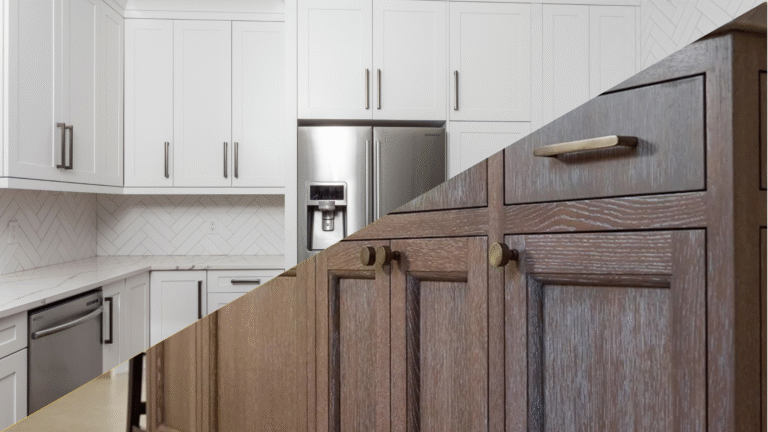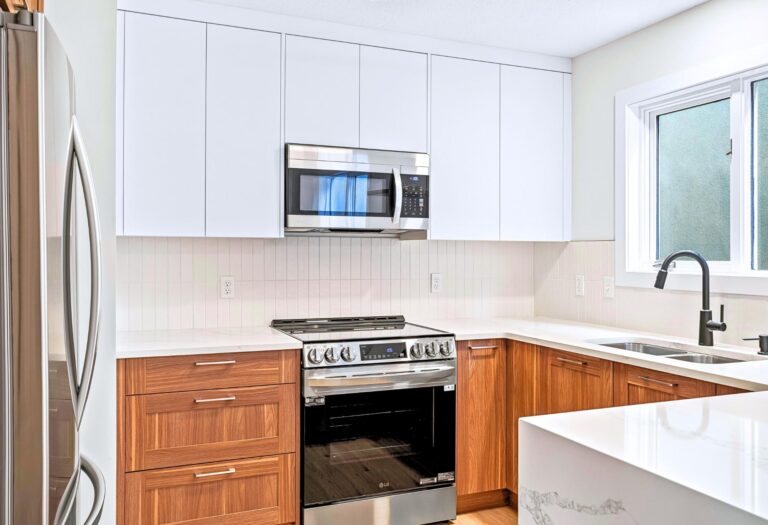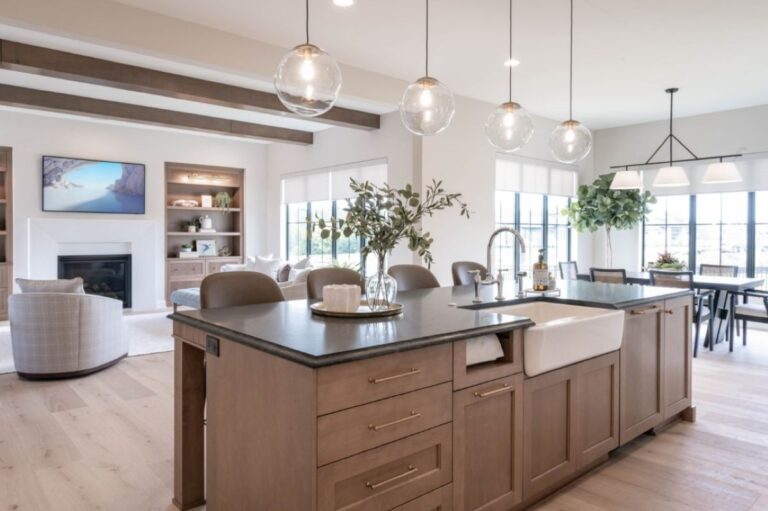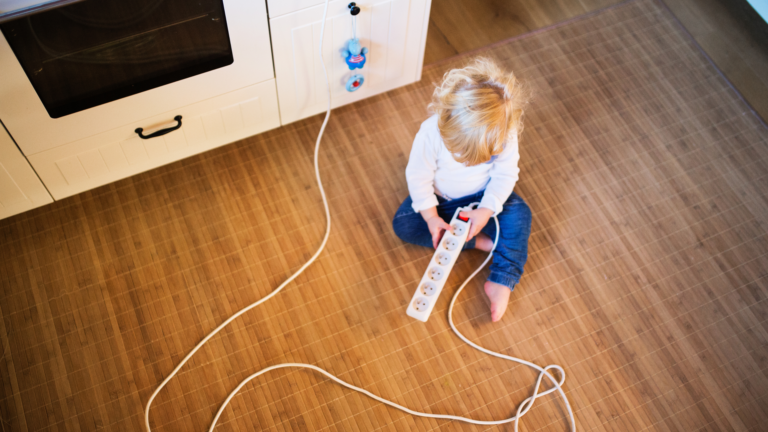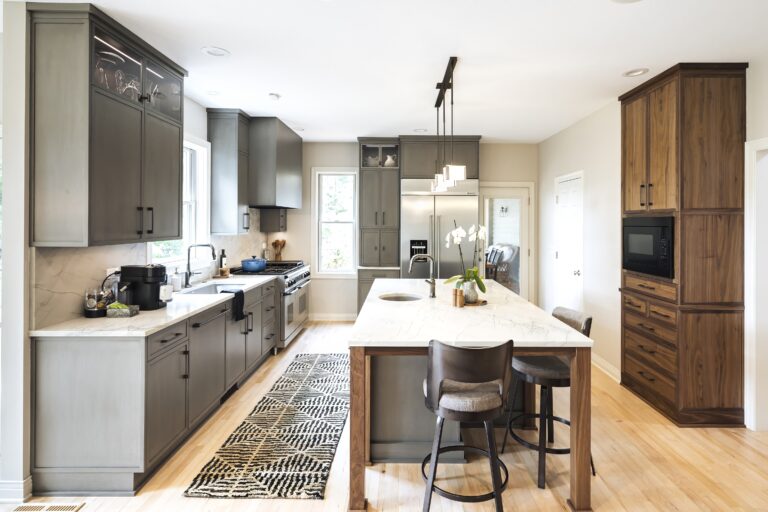Wondering if your kitchen cabinets should go all the way to the ceiling? You’re not alone. This is one of the most common layout questions homeowners and designers ask—and the answer depends on a few key things: your ceiling height, your style, and how you want the space to feel.

Why Don’t All Kitchen Cabinets Go to the Ceiling?
You’ve probably seen kitchens where the cabinets stop short—usually leaving a foot or more of space between the top of the cabinet and the ceiling. This design choice was standard in many homes for decades. But why?
Here are a few reasons kitchen cabinets don’t always go to the ceiling:
Older construction often had uneven ceilings, so shorter cabinets were easier to install
Builders saved on materials and labor by using standard cabinet heights
That open gap allowed room for crown moulding or display decor
While it was once the default, homeowners today are asking: should my kitchen cabinets go to the ceiling? Especially with modern, clean-lined styles gaining popularity, more people are leaning toward full-height designs.
Not to mention, no one wants to clean years of grease and dust bunnies off the top of their cabinets.

When Full-Height Cabinets Make Sense
So, when do kitchen cabinets go to the ceiling?
Full-height cabinets are a smart choice if:
Your ceilings are 8 or 9 feet high
You want a sleek, built-in look
You need more storage space
You’re leaning into a modern or transitional aesthetic
Cabinets that extend all the way to the ceiling eliminate dust-catching gaps and make your kitchen feel taller, more polished, and better designed.
Even if the top shelves are hard to reach, they’re perfect for storing holiday dishes or backup supplies.

What If My Ceilings Are Higher?
Wondering, “Do kitchen cabinets go to the ceiling when the ceilings are 10 feet or higher?”
Not always.
If your ceilings are especially tall, going all the way up with one continuous cabinet run can feel overwhelming—or just impractical.
Here’s what designers often do instead:
Stacked cabinets: Add a smaller second row above your main cabinets
Use filler panels or risers: Fill the gap for a clean finish without adding more cabinet boxes
Incorporate open shelving: Create a break in visual height with floating shelves above
The goal isn’t to reach the ceiling at all costs—it’s to make it look intentional.

Why Some Kitchens Use Different Cabinet Heights
If you’re asking, “Do kitchen cabinets go to the ceiling?”—what happens when the answer is yes and no?
In modern kitchen design, it’s common (and often intentional) to mix cabinet heights within the same space.
In modern design, mixing cabinet heights can:
Create zones (like full-height pantry storage vs. lower wall cabinets)
Add visual balance without relying on symmetry
Break up the layout so it feels less boxy or repetitive
Work with awkward ceilings
Make the kitchen feel more custom and intentional
It’s not a mistake—it’s a design choice. And when done right, it makes the whole space feel smarter.

Do Kitchen Cabinets Go to the Ceiling?
There’s no one right answer. But here’s the short version:
Yes, go to the ceiling if your ceilings are under 9 feet and you want more storage and a clean, custom look
No, stop short if you like a layered look or want to use that upper space for styling or lighting
Either way, make the decision intentionally—not by default. There are pros and cons to taking kitchen cabinets to the ceiling.
Ask Yourself These Questions:
When deciding if your cabinets should go to the ceiling, ask:
What’s my ceiling height?
Do I want to display decor up top, or hide clutter?
Am I going for traditional, modern, or something in between?
Will I actually use the extra storage, or is it just visual?
No one-size-fits-all answer here. But the right cabinet height should feel intentional, not accidental.
Do you have a kitchen reno coming up? Designers say to start here.


